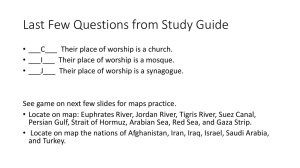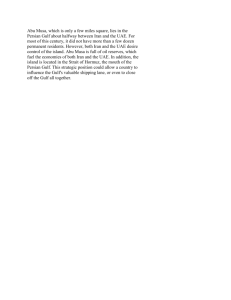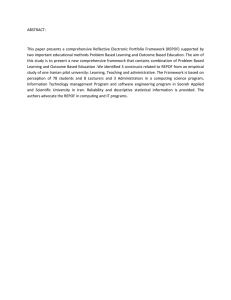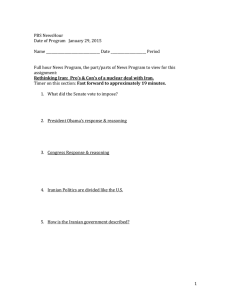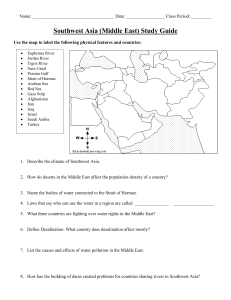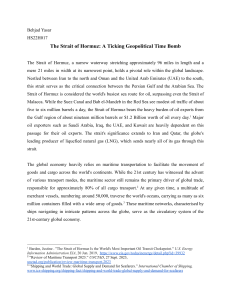Cosponsor H. Con. Res. 94 US-Iran Incidents-at-Sea
advertisement
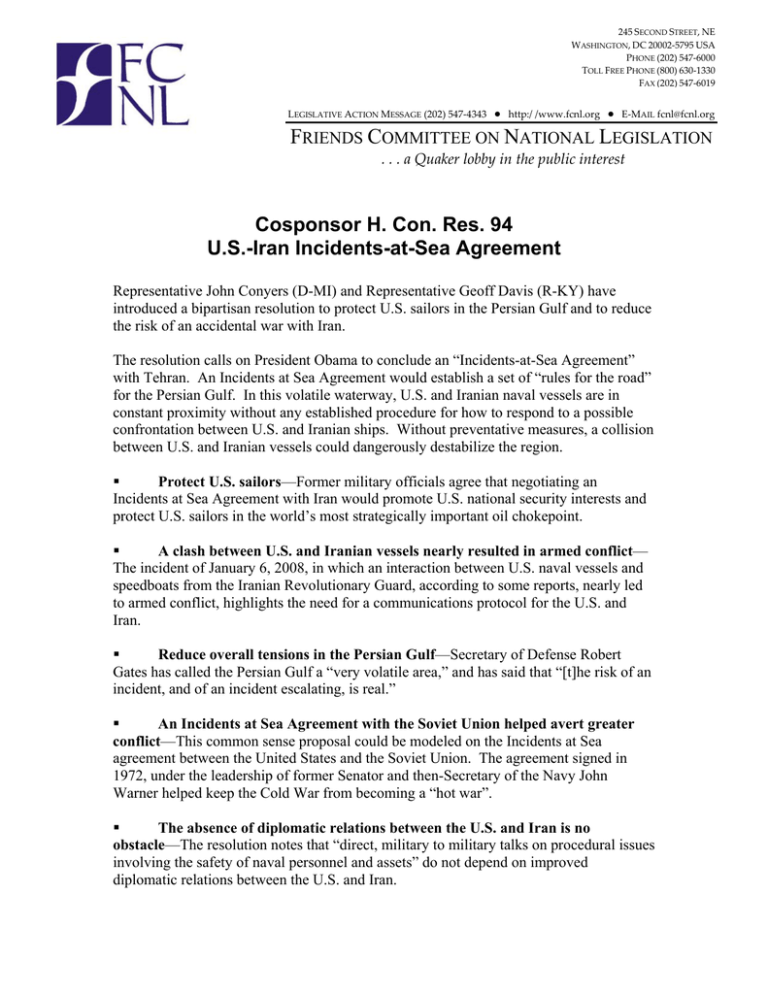
245 SECOND STREET, NE WASHINGTON, DC 20002‐5795 USA PHONE (202) 547‐6000 TOLL FREE PHONE (800) 630‐1330 FAX (202) 547‐6019 LEGISLATIVE ACTION MESSAGE (202) 547‐4343 ! http:/ /www.fcnl.org ! E‐MAIL fcnl@fcnl.org FRIENDS COMMITTEE ON NATIONAL LEGISLATION . . . a Quaker lobby in the public interest Cosponsor H. Con. Res. 94 U.S.-Iran Incidents-at-Sea Agreement Representative John Conyers (D-MI) and Representative Geoff Davis (R-KY) have introduced a bipartisan resolution to protect U.S. sailors in the Persian Gulf and to reduce the risk of an accidental war with Iran. The resolution calls on President Obama to conclude an “Incidents-at-Sea Agreement” with Tehran. An Incidents at Sea Agreement would establish a set of “rules for the road” for the Persian Gulf. In this volatile waterway, U.S. and Iranian naval vessels are in constant proximity without any established procedure for how to respond to a possible confrontation between U.S. and Iranian ships. Without preventative measures, a collision between U.S. and Iranian vessels could dangerously destabilize the region. Protect U.S. sailors—Former military officials agree that negotiating an Incidents at Sea Agreement with Iran would promote U.S. national security interests and protect U.S. sailors in the world’s most strategically important oil chokepoint. A clash between U.S. and Iranian vessels nearly resulted in armed conflict— The incident of January 6, 2008, in which an interaction between U.S. naval vessels and speedboats from the Iranian Revolutionary Guard, according to some reports, nearly led to armed conflict, highlights the need for a communications protocol for the U.S. and Iran. Reduce overall tensions in the Persian Gulf—Secretary of Defense Robert Gates has called the Persian Gulf a “very volatile area,” and has said that “[t]he risk of an incident, and of an incident escalating, is real.” An Incidents at Sea Agreement with the Soviet Union helped avert greater conflict—This common sense proposal could be modeled on the Incidents at Sea agreement between the United States and the Soviet Union. The agreement signed in 1972, under the leadership of former Senator and then-Secretary of the Navy John Warner helped keep the Cold War from becoming a “hot war”. The absence of diplomatic relations between the U.S. and Iran is no obstacle—The resolution notes that “direct, military to military talks on procedural issues involving the safety of naval personnel and assets” do not depend on improved diplomatic relations between the U.S. and Iran. Recent accidents have demonstrated the danger of collisions in the Strait of Hormuz in the Persian Gulf—In March 2009, a collision between a U.S. submarine and a U.S. warship in the Strait of Hormuz had devastating consequences. The U.S.S. Hartford (a nuclear powered submarine) ran into the U.S.S. New Orleans (a transport dock with 700 marines on board), resulting in a rupture of the New Orleans fuel tank that dumped 25,000 gallons of diesel into the Strait and injured 15 sailors in March 2009. A similar incident involving an Iranian vessel would be catastrophic, possibly inciting a full-scale military confrontation. The geography of the Strait of Hormuz requires increased precautionary measures—The main shipping route of the Strait of Hormuz is only two miles long. The impact of tense relations and crowded shipping lanes only heightens the prospects for accidental conflict. The Strait of Hormuz has been characterized as “a global strategic checkpoint” through which nearly two-fifths of the world’s oil is shipped—A naval conflict in the Strait of Hormuz would have a devastating impact on the world’s oil supply. An average of fifteen tankers carrying between sixteen and seventeen million barrels of crude oil pass through the Strait each day. Congressional support is crucial—H.Con.Res. 94 simply declares that “Whereas entering into such an Incidents at Sea Agreement could help protect American lives and treasure: Now, therefore, be it Resolved by the House of Representatives (the Senate concurring), That it is the sense of Congress that it should be the policy of the United States to promote the negotiation of an `Incidents At Sea Agreement' between the United States of America and the Government of Iran.” Both the U.S. and Iran have a substantial naval presence in the Strait of Hormuz: ¾ Iran has three submarines, three missile combat ships, two other major combat ships, 21 missile patrol vessels, and five mine ships in the Strait. ¾ 36 oil tankers pass through the Strait daily ¾ The United States has two strike groups in the Strait with a total of over 13,000 military troops on board ¾ Each week, approximately eight U.S. naval vessels, 250 oil tankers, and over 100 million dead-weight tons of cargo are shipped through the narrow, two mile wide shipping lanes Show your support for this common sense national and global security measure. Cosponsor H.Con.Res. 94 to encourage the negotiation of an Incidents at Sea Agreement between the U.S. and Iran.
